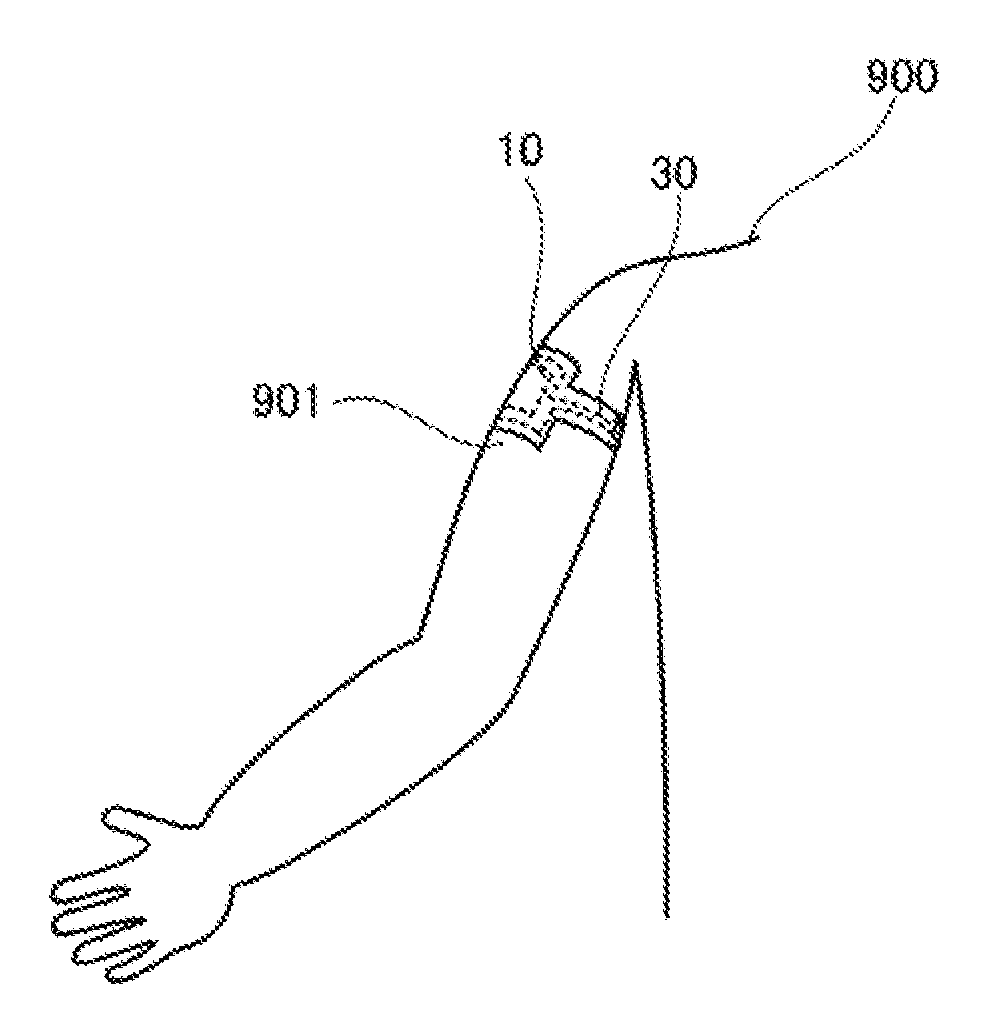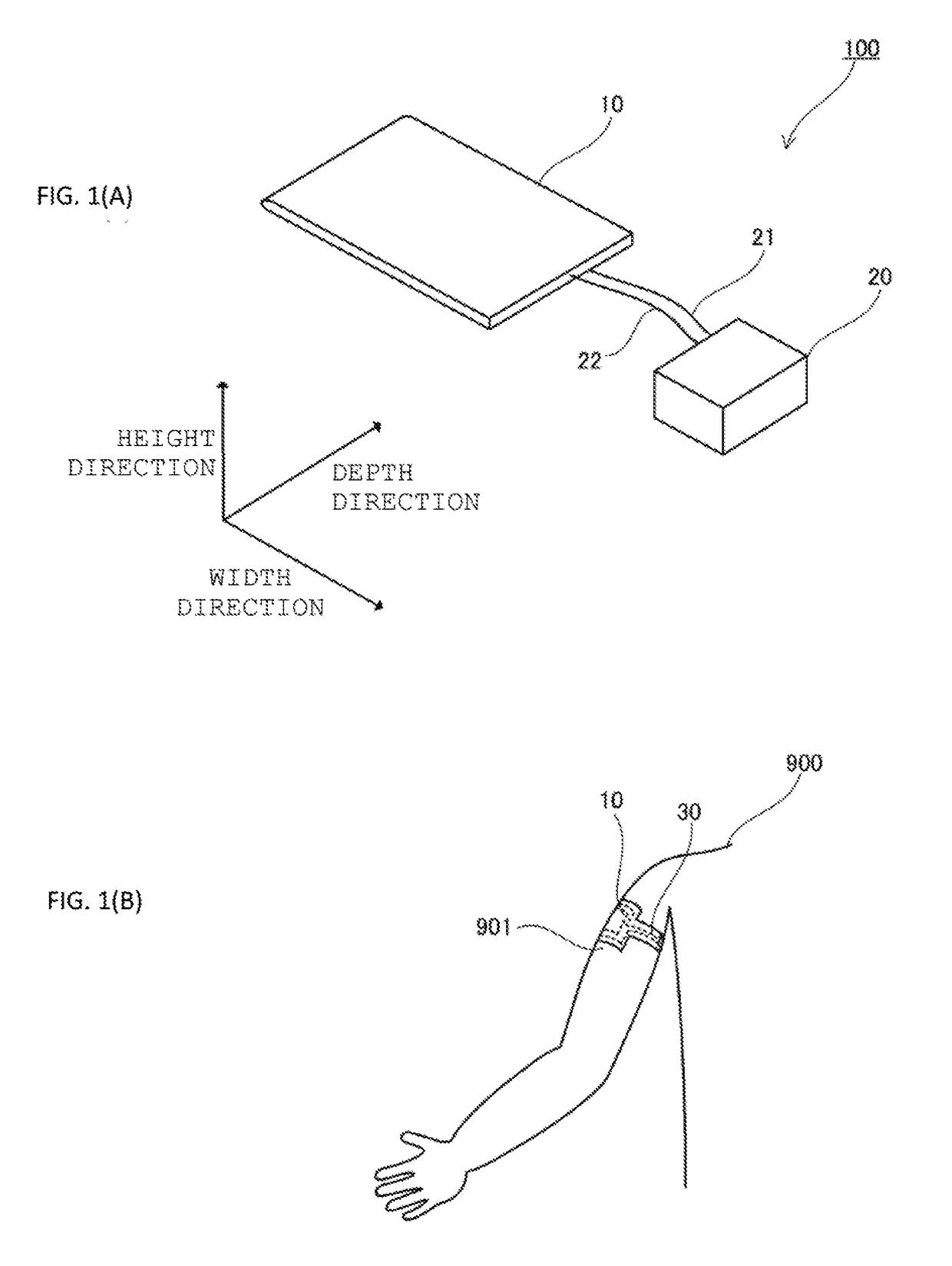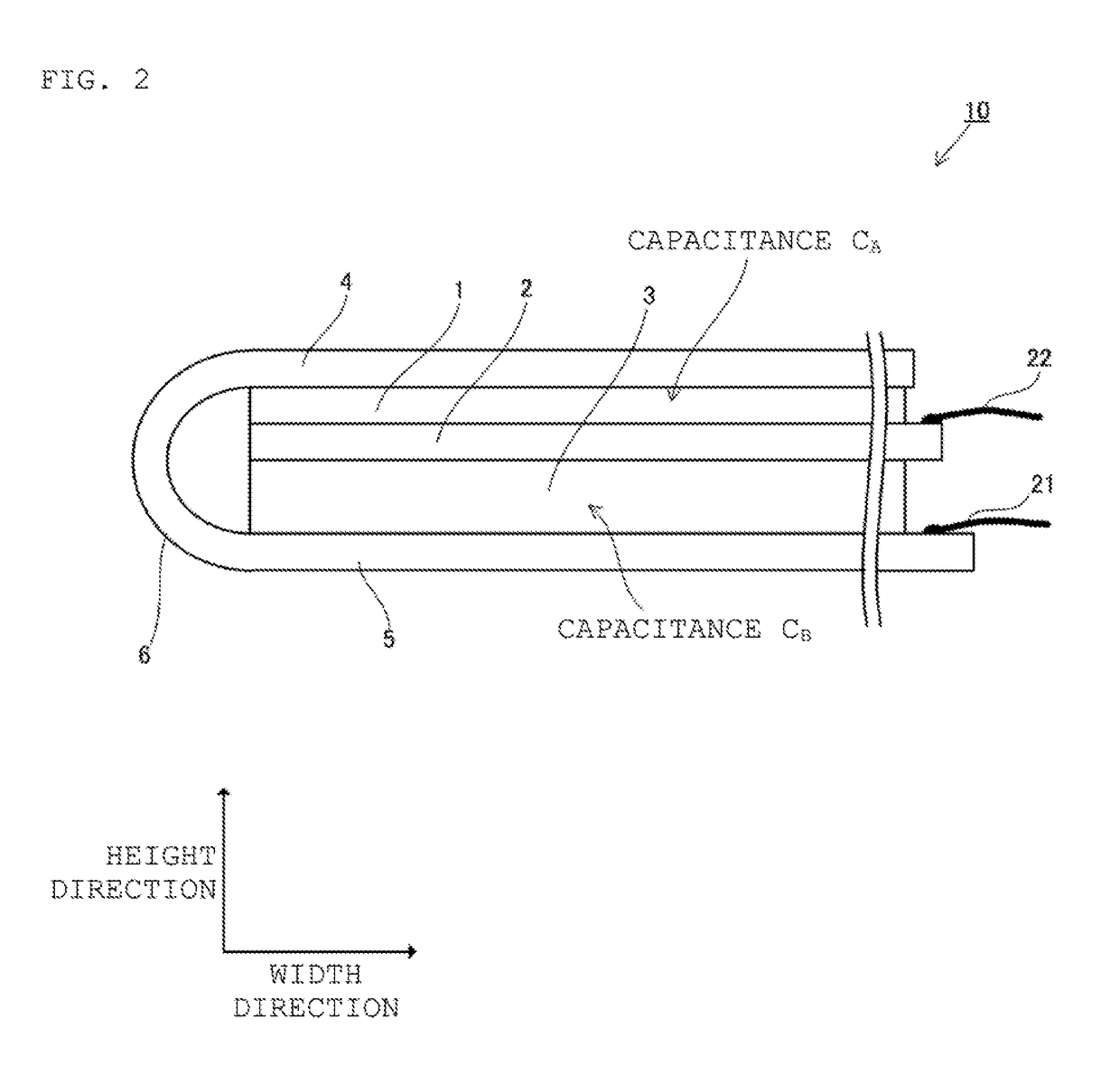Piezoelectric element and bend detecting sensor
a technology of bend detection and piezoelectric element, which is applied in the field of piezoelectric elements, can solve the problems of difficult to precisely detect the output the voltage of the piezoelectric element is significantly influenced by, and the voltage produced in the piezoelectric element becomes too high
- Summary
- Abstract
- Description
- Claims
- Application Information
AI Technical Summary
Benefits of technology
Problems solved by technology
Method used
Image
Examples
first embodiment
[0034]A biosensor 100 will be described with reference to FIGS. 1(A), 1(B) and 2. The biosensor 100 is typically attached to the surface of the skin of a living body to detect a displacement of the skin surface.
[0035]As illustrated in FIG. 1(A), the biosensor 100 includes the sensor element 10 and a detecting unit 20. The sensor element 10 and the detecting unit 20 are electrically connected with signal lines 21 and 22 interposed therebetween. Alternatively, the detecting unit 20 may be directly connected to the sensor element 10 without the use of signal lines. The sensor element 10 has a film shape which is thin in a height direction as compared to a width and depth directions.
[0036]As illustrated in FIG. 1(B), the biosensor 100 is attached to a living body 900 such that an upper surface (a surface in the height direction as viewed in FIG. 1(A)) or a lower surface (a surface in a direction opposite to the height direction as viewed in FIG. 1(A))) of the sensor element 10 comes in...
second embodiment
[0064]Next, a sensor element 10A will be described with reference to FIGS. 4, 5(A), and 5(B). FIG. 4 is a side view illustrating the sensor element 10A seen from a depth direction. FIG. 5(A) is a top view of a piezoelectric film 31 (corresponding to a first film), and FIG. 5(B) is a top view of a piezoelectric film (corresponding to a second film).
[0065]The sensor element 10A does not produce charges when stretched or contracted in a planar direction (a width direction and the depth direction), and produces charges only when curved in a laminating direction. More specifically, the sensor element 10A differs from a sensor element 10 in that a piezoelectric film 3A is formed by two piezoelectric film layers 31 and 32.
[0066]The piezoelectric films 31 and 32 are made of polylactic acid having different compositions. The piezoelectric film 31 is preferably made of Poly-D-Lactic-Acid (PDLA), and the piezoelectric film 32 is preferably made of Poly-L-Lactic-Acid (PLLA). The order of those...
third embodiment
[0077]FIG. 7 is a side view of a sensor element 10B seen from a depth direction. FIG. 8 is a top view of a piezoelectric film 31B.
[0078]The sensor element 10B differs from the sensor element 10 in that it includes the piezoelectric film 31B instead of the piezoelectric film 31. Components which overlap with components of the sensor element 10 will not be described.
[0079]The piezoelectric film 31B is preferably made of PLLA. The piezoelectric film 31B is stretched in a clockwise direction by 45° with respect to a width direction as indicated by an outlined arrow 913 in FIG. 8. Thus, the PLLA included in the piezoelectric film 31B is oriented in the clockwise direction by 45° from the width direction. Hence, the piezoelectric film 31B and a piezoelectric film 32 have orientation directions of molecules of polylactic acid which are orthogonal to each other and are made of the same composition, and therefore have reverse charge directions.
[0080]In this regard, the sensor element 10B in...
PUM
 Login to View More
Login to View More Abstract
Description
Claims
Application Information
 Login to View More
Login to View More - R&D
- Intellectual Property
- Life Sciences
- Materials
- Tech Scout
- Unparalleled Data Quality
- Higher Quality Content
- 60% Fewer Hallucinations
Browse by: Latest US Patents, China's latest patents, Technical Efficacy Thesaurus, Application Domain, Technology Topic, Popular Technical Reports.
© 2025 PatSnap. All rights reserved.Legal|Privacy policy|Modern Slavery Act Transparency Statement|Sitemap|About US| Contact US: help@patsnap.com



